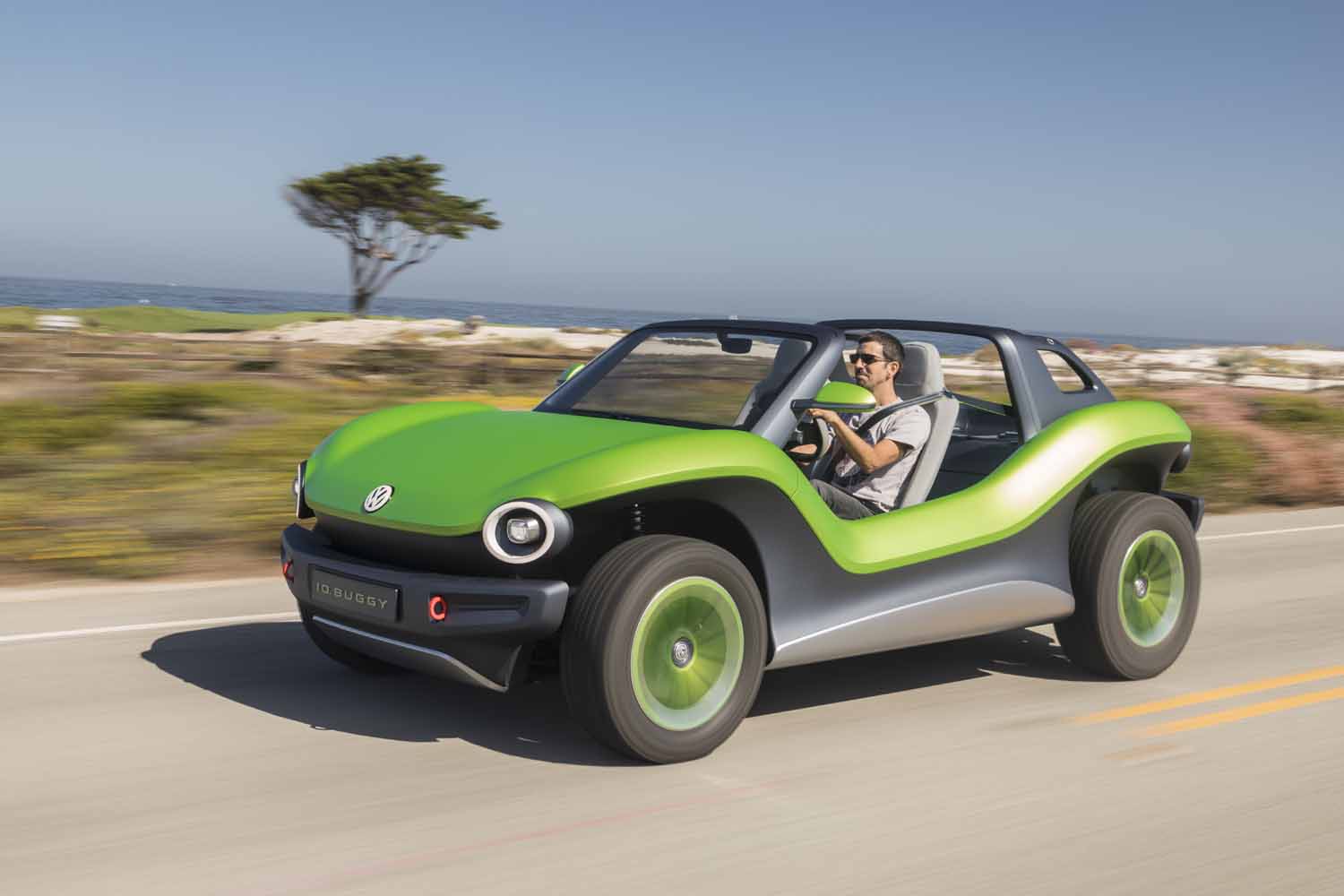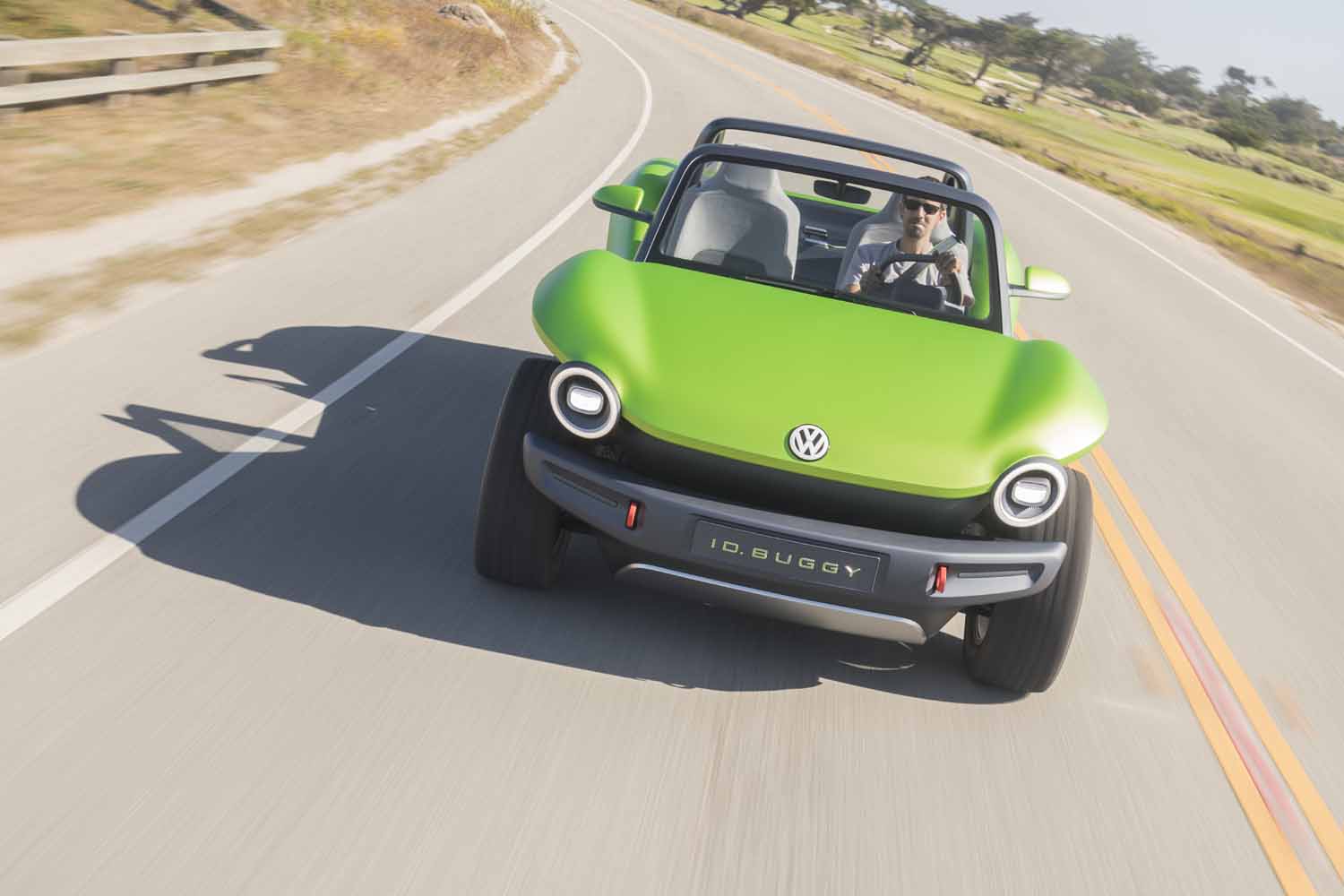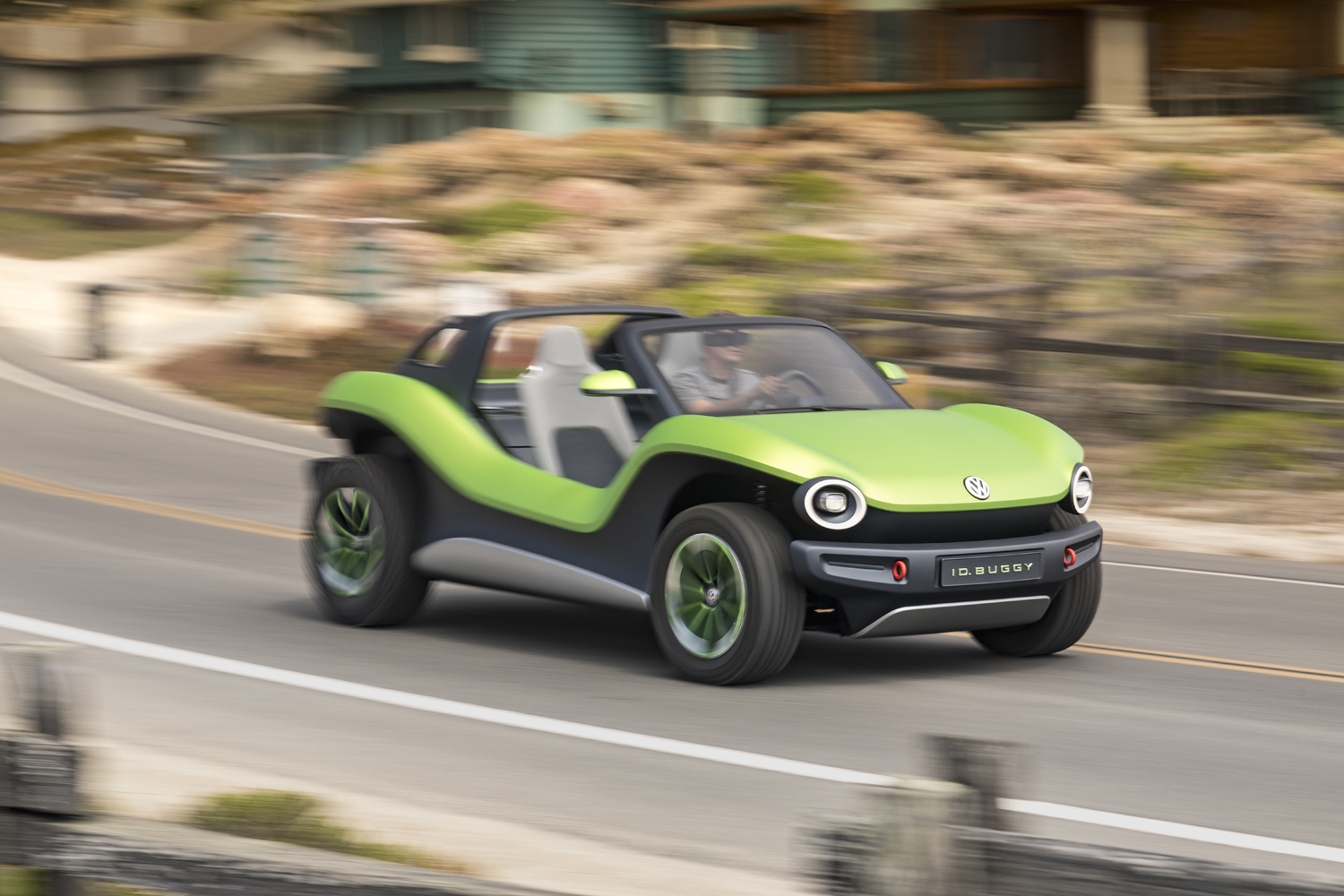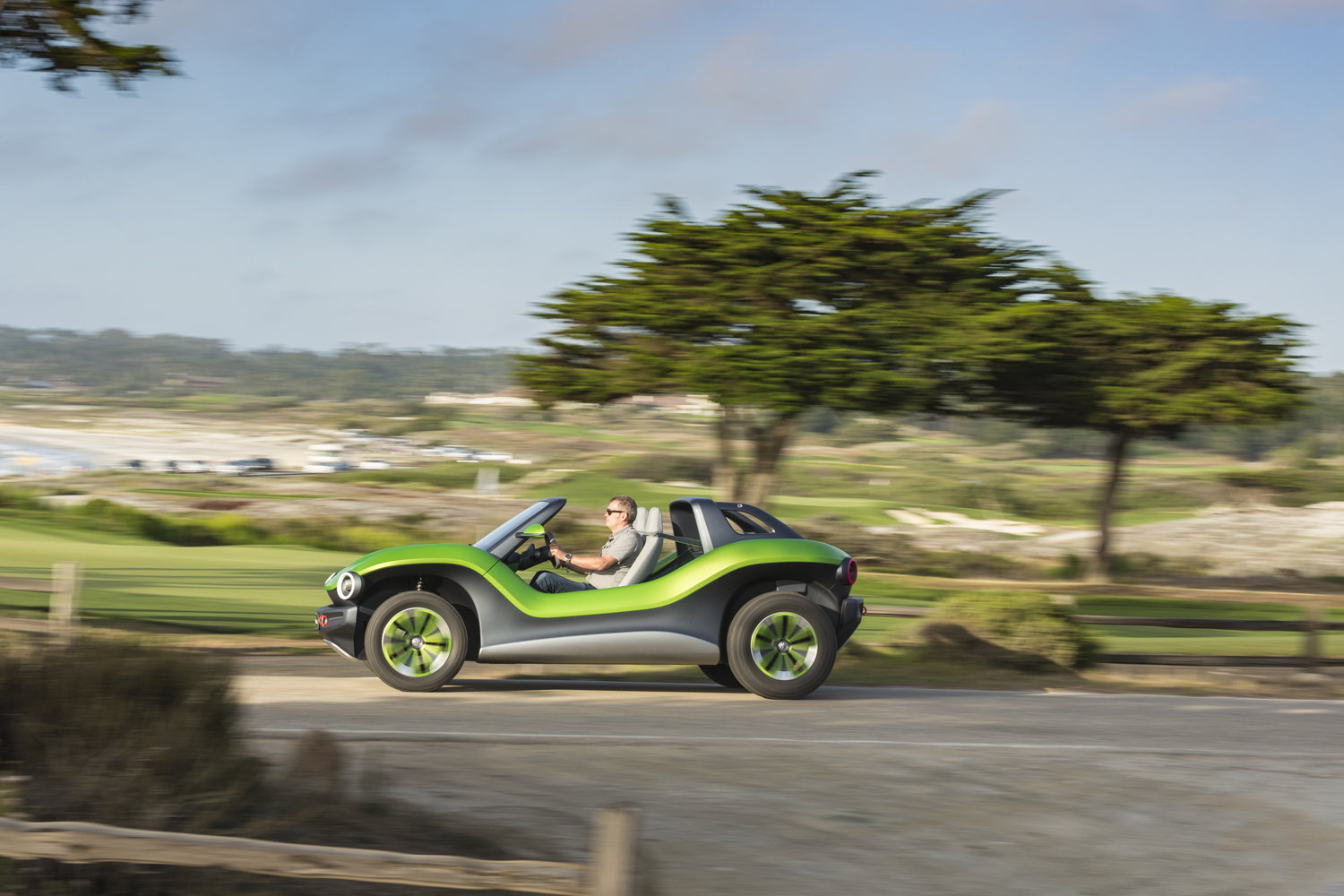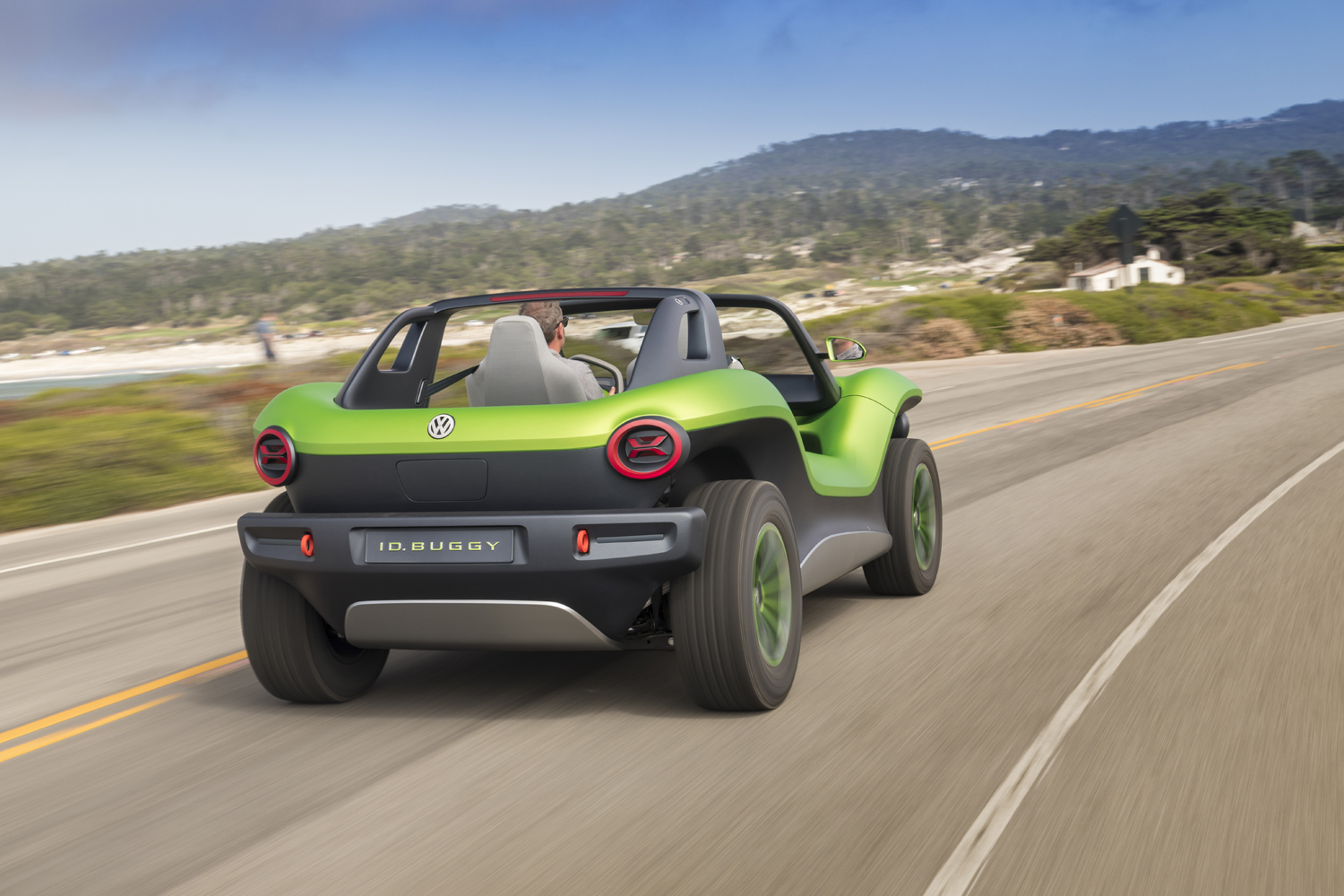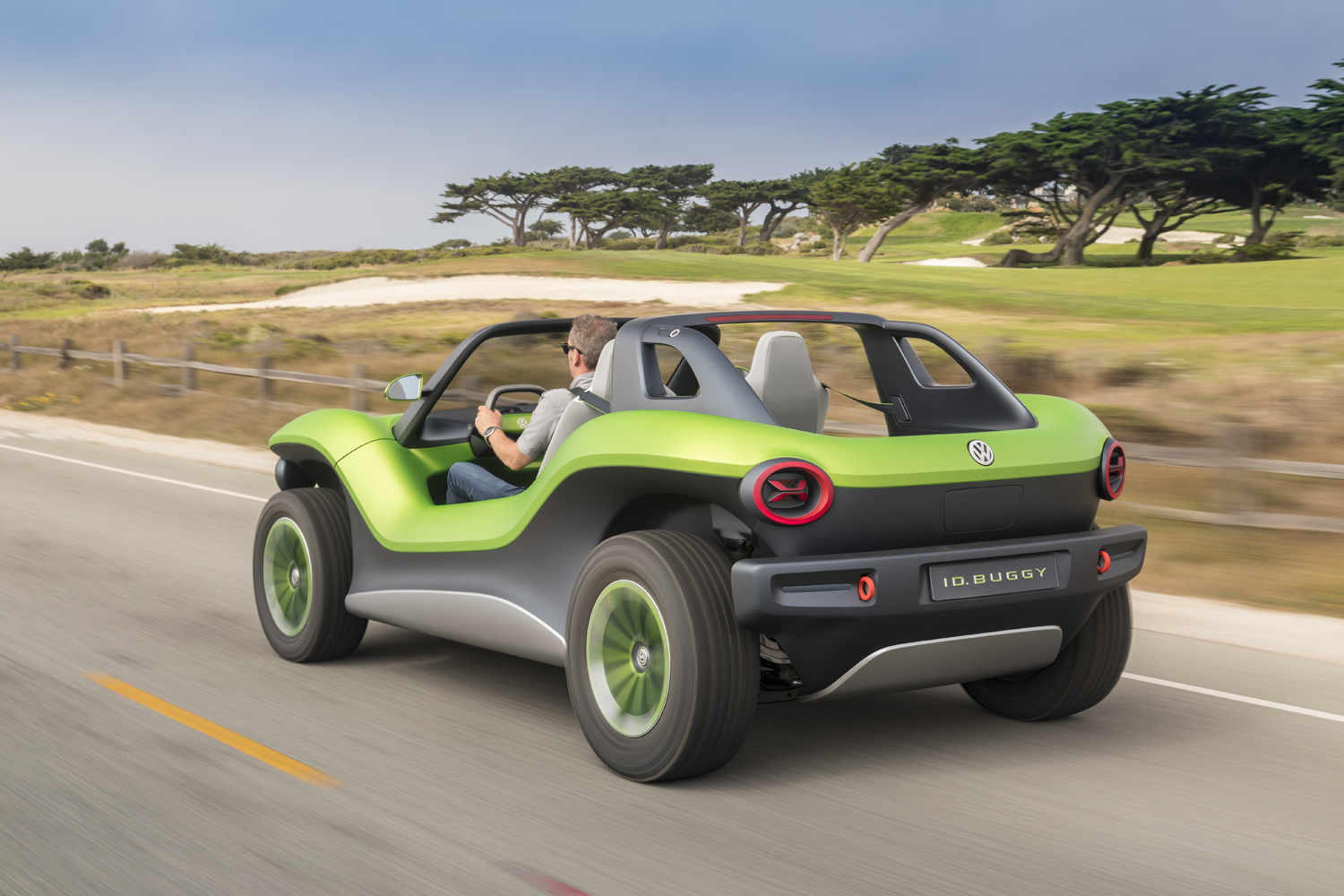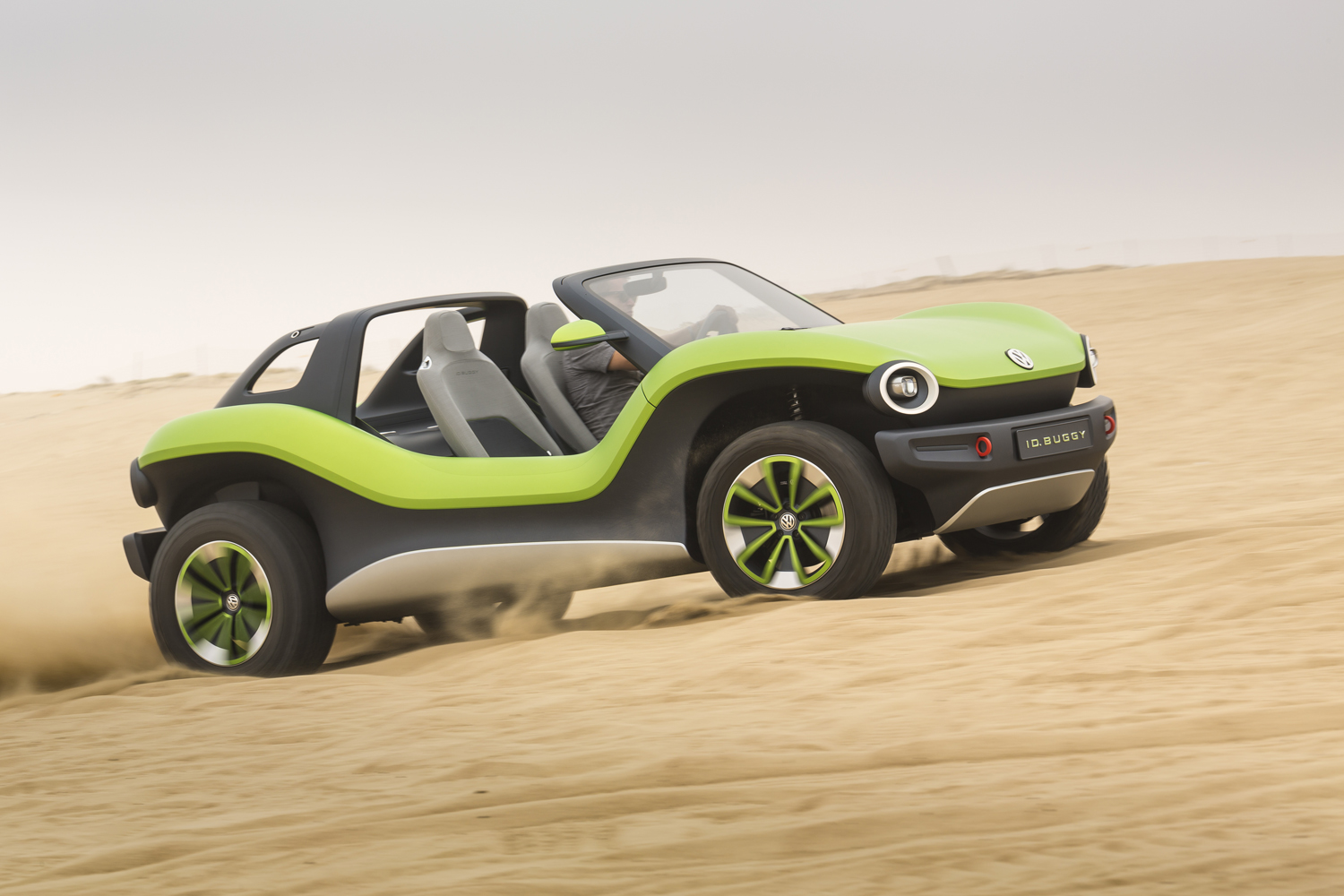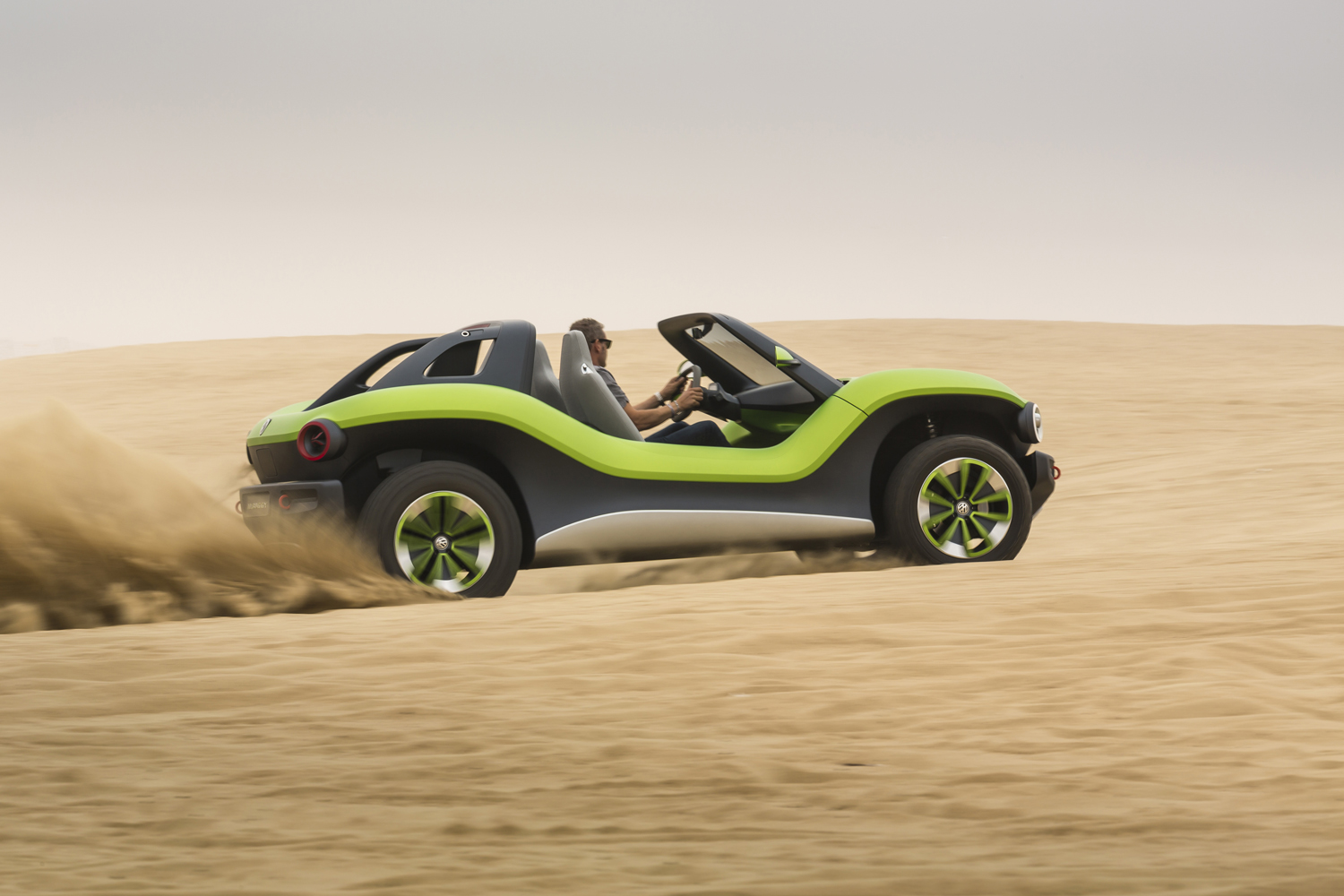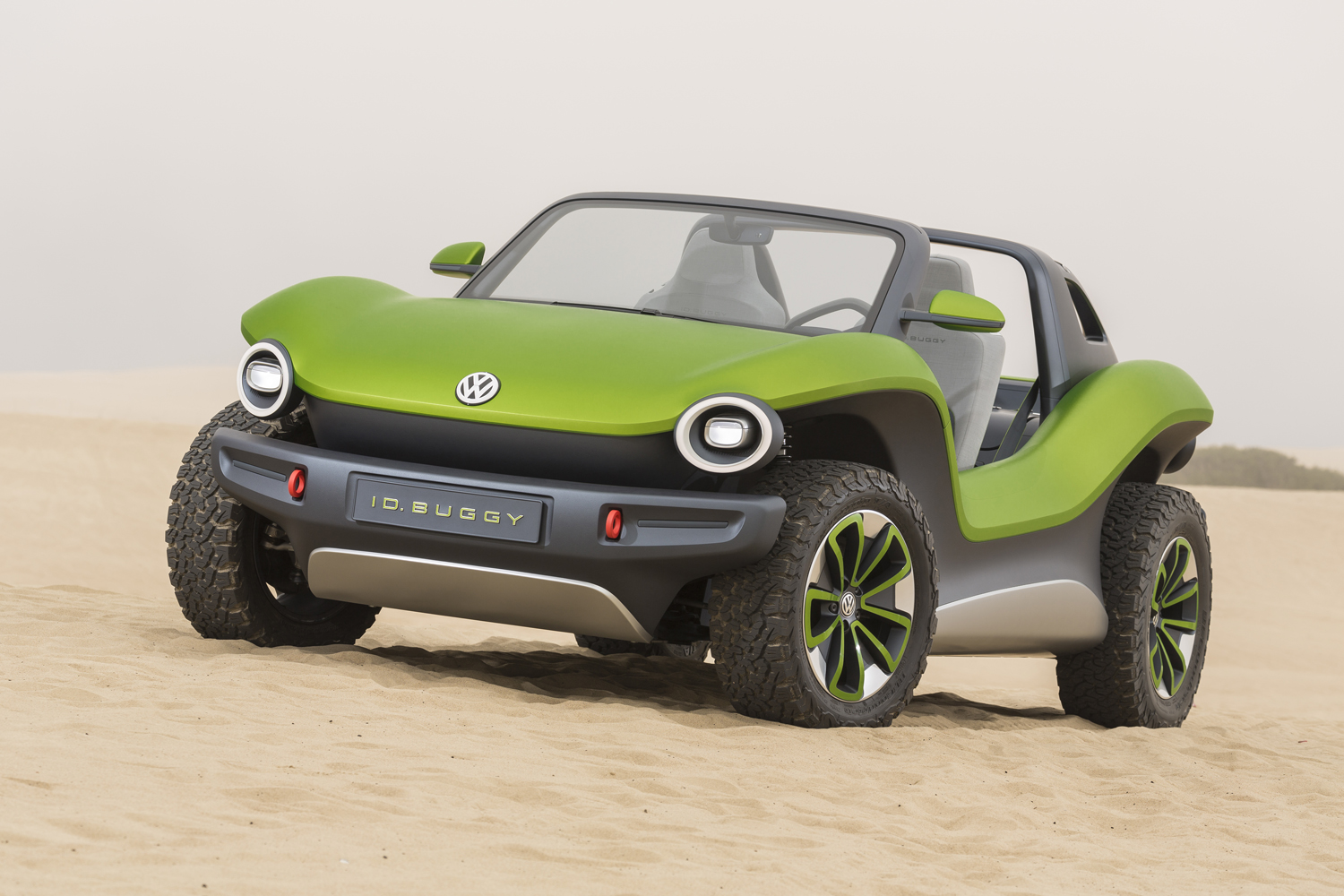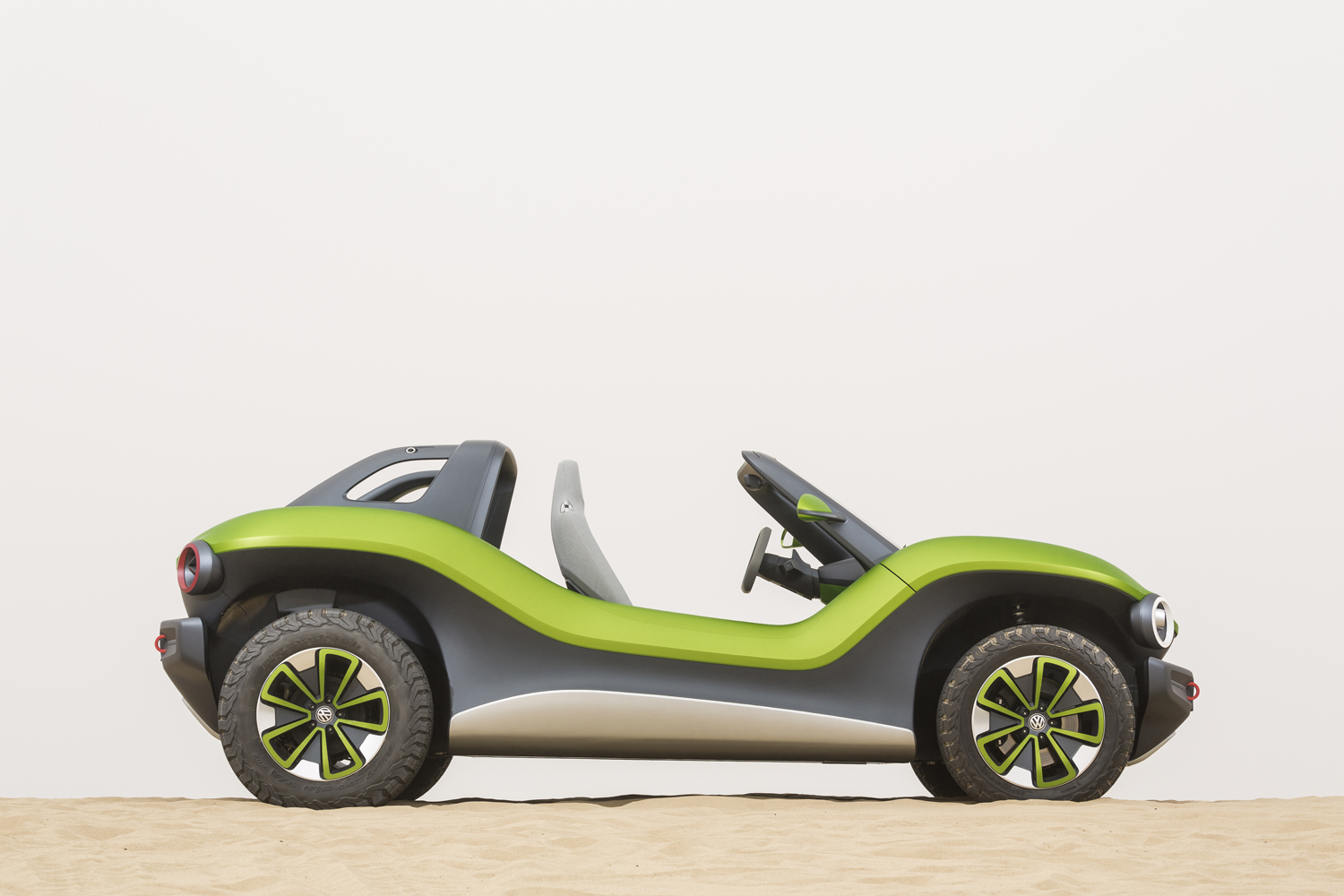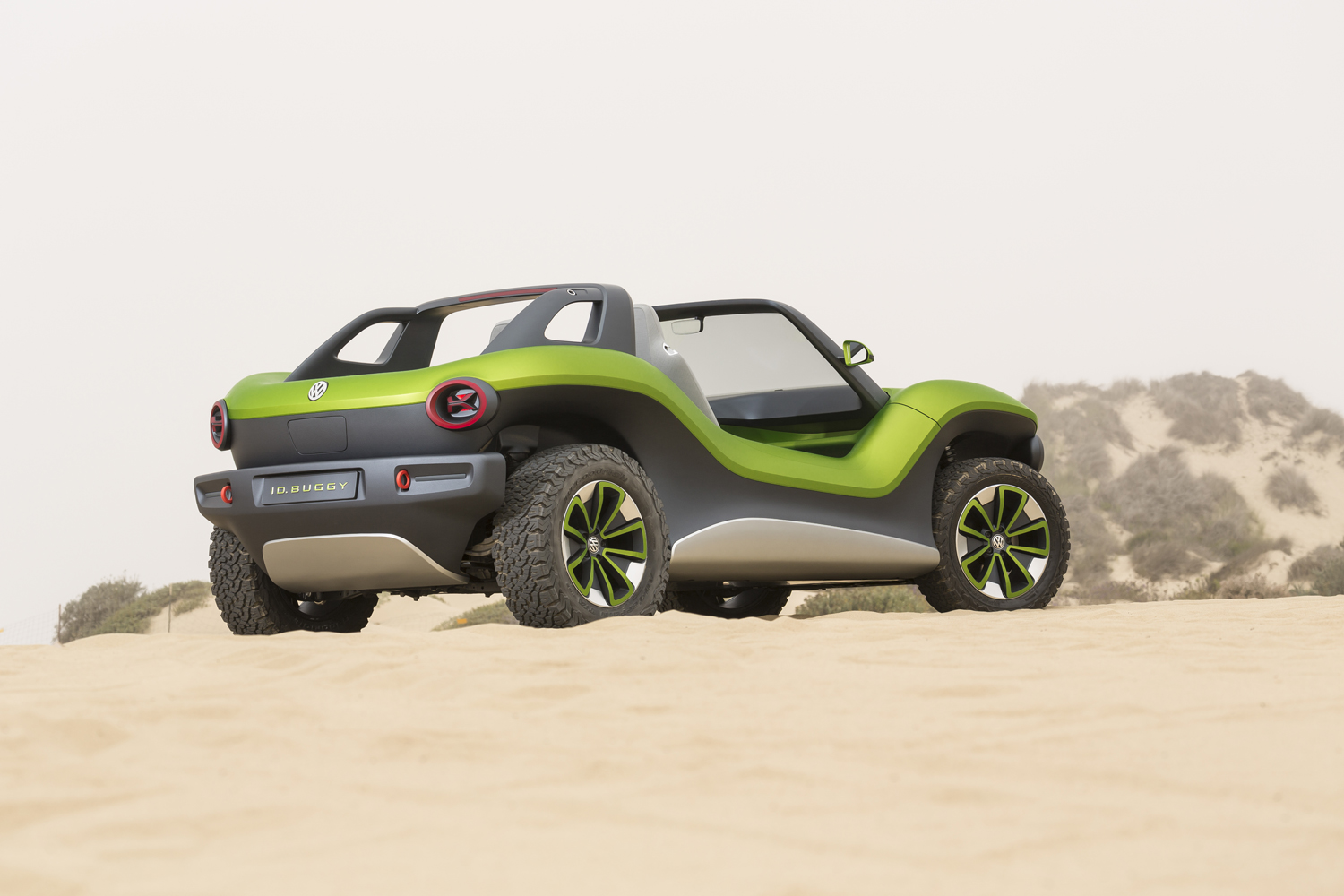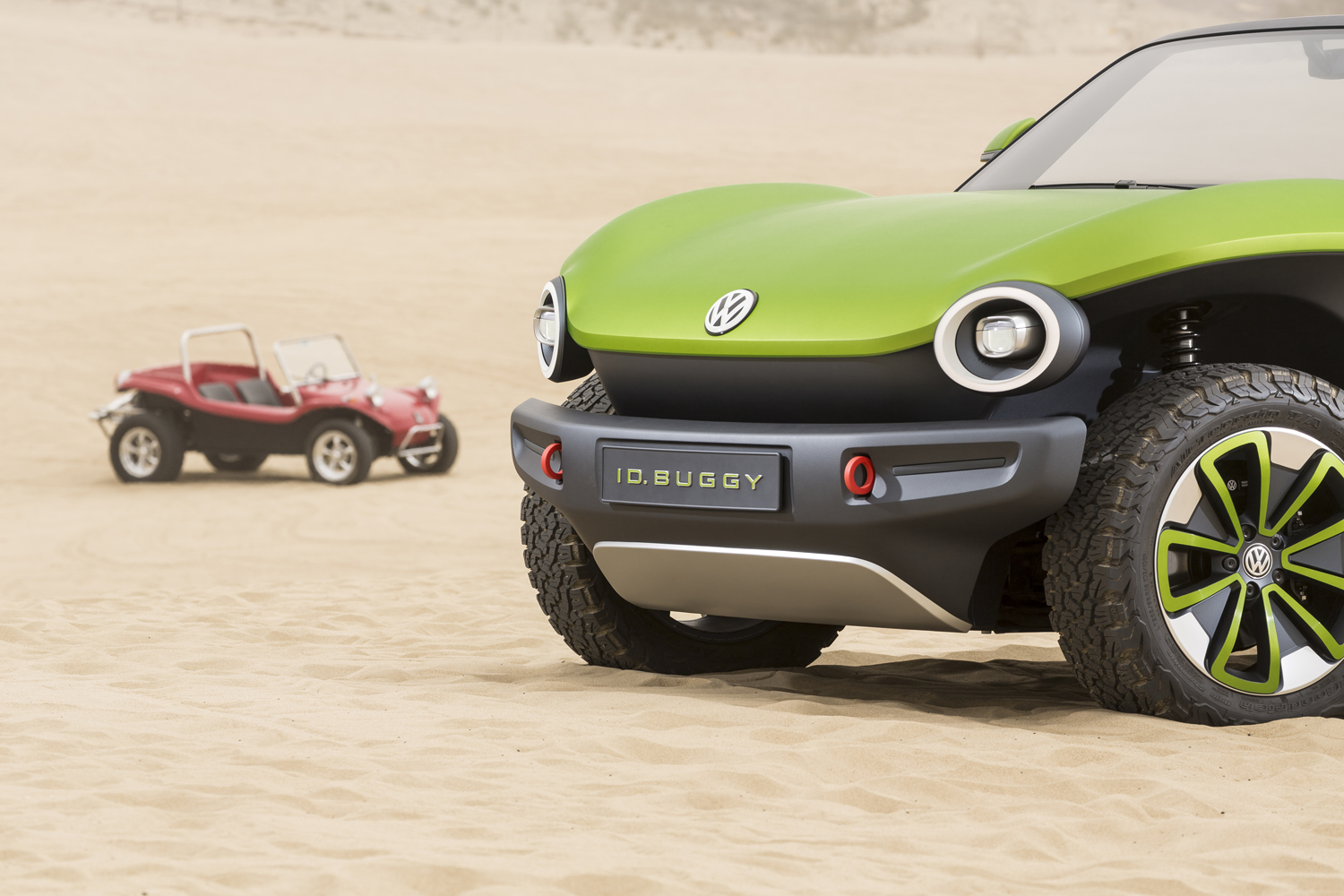Volkswagen resurrected the emblematic Meyers Manx beach buggy as an electric vehicle when it unveiled the ID Buggy concept at the 2019 Geneva Auto Show. Switzerland in early March is no place for an open-top dune buggy, its interior is fully waterproof but I’m certainly not, so I trekked out to sunny Pebble Beach, California, to take this one-of-a-kind concept car for a quick spin in the conditions it was developed to be enjoyed in.
The ID Buggy shows the fun side of Volkswagen’s imminent electrification offensive, while showcasing the Lego-like flexibility of the electric technology it’s developing for production cars like the upcoming ID.3 hatchback. It turns heads everywhere it goes; I even unexpectedly got a thumbs-up from someone cruising in a Ferrari 458 Italia.
I’d stop and stare, too. The Buggy takes the form of a battery-powered two-seater that channels the spirit of the original, Beetle-based Manx sold between 1964 and 1971. It’s not merely a retro-styled re-creation, though. It stands out with a look and a personality of its own. It has no roof and no doors, but users can stretch a fabric top between the windshield frame and the roll bar to protect the passenger compartment from the sun, or from the elements. 18-inch alloy wheels wrapped by off-road tires help the ID Buggy plow through sand dunes without getting stuck, while aluminum skid plates ensure obstacles commonly encountered off-road, like rocks, won’t cause a high-voltage impact with the battery pack.
“There are enough vehicles with doors,” Volkswagen design boss Klaus Bischoff told Digital Trends during the 2019 Geneva show. On the scenic 17-Mile Drive that runs parallel to the Pacific coast, not having doors brings the ID’s occupants much closer to the sounds, smells, and sights of the ocean. It also creates a visual link between the concept and its predecessor. It didn’t have doors, either, so getting in required hopping over the body.
Once inside, it becomes immediately clear that the ID Buggy pays homage to its predecessors with an ultra-minimalist, back-to-basics interior that nonetheless incorporates state-of-the-art tech features. There are touch-sensitive buttons on the small, two-spoke steering wheel to control the stereo. Volkswagen also replaced the key with a chip card, integrated a wireless charger into the center console, and added a digital instrument cluster. The Buggy is a surprisingly comfortable car, its seats are higher and more upright than those in the original Manx, and visibility is as excellent as you’d expect.
Looking over the short, curvaceous front fenders to see the road ahead leaves no doubt that this concept was created with fun in mind. It also shows the freedom stylists have when they design an electric car whose silhouette isn’t defined by a suitcase-sized engine.
While the original Manx relied on a raucous flat-four, the ID’s lightweight composite body hides Volkswagen’s production-bound modular MEB platform. An electric motor mounted over the rear axle draws power from a 62-kWh lithium-ion battery pack stuffed under the passenger compartment to zap the rear wheels with 201 horsepower and 228 pound-feet of torque. Volkswagen pegs the concept’s driving range at about 155 miles, and its 0-to-60-mph time at 7.2 seconds. The concept is rear-wheel drive, but making it all-wheel drive would be as simple as adding an electric motor over the front axle.
It’s not just a wild, head-turning concept, either. Motorists may be able to buy one in a few years, but not necessarily from Volkswagen.
“We’ve been holding discussions with a company called E.Go who is very interested in bringing the ID Buggy to life. This show car is not a true show car, it is already conceptualized by e.Go’s team. It is feasible to build. E.Go will basically build the product you see, the shell, onto our platform in a low-volume, low-production series. The project needs to go through feasibility studies, so it hasn’t received final approval, but both parties have a strong will to make it happen,” Volkswagen board member Jürgen Stackmann told me shortly after the car’s unveiling in chilly Geneva.
The first grain of sand in the dune
When it arrives, assuming this green car receives the proverbial green light for production, the ID Buggy will showcase the MEB platform’s unusually high level of flexibility. Think of it as a skateboard; everything needed to make the car move is under the occupants. Volkswagen has also used the architecture as the basis for a Microbus-inspired van, an SUV, and a sleek-looking sedan. All of these vehicles have been previewed by concept cars over the past two years, and most will be in series production in early 2020 — one will even be built in the United States.
Enthusiasts worried electrification will turn cars into boring appliances can sleep easy; the ID Buggy shows how much character an EV can have.
“[The Buggy] will be the start of more joint ventures created to bring MEB to companies to help them realize cars on our platform,” Stackmann concluded. Enthusiasts worried electrification will turn cars into boring appliances can sleep easy; the ID Buggy shows how much character an EV can have.
Editors' Recommendations
- Volkswagen ID.4 vs Tesla Model Y
- 2021 Volkswagen ID.4 AWD first drive review: Gaining traction
- 2021 Volkswagen ID.4 first drive review: Lightning bug
- 2021 Volkswagen ID.4 aims to (finally) bring electric cars to the masses
- BMW’s electric Concept i4 has two words for Tesla’s Model 3: Watch out

